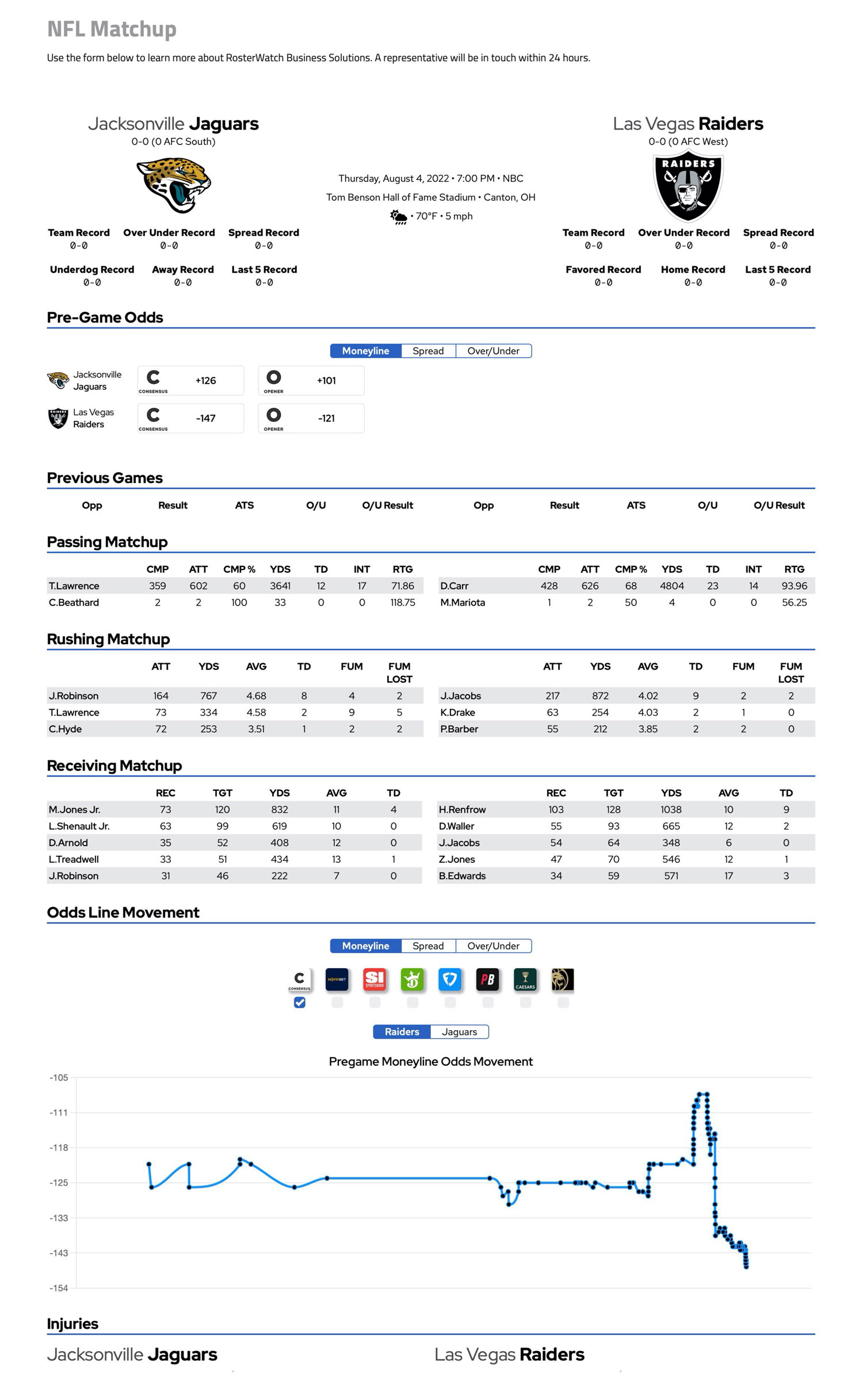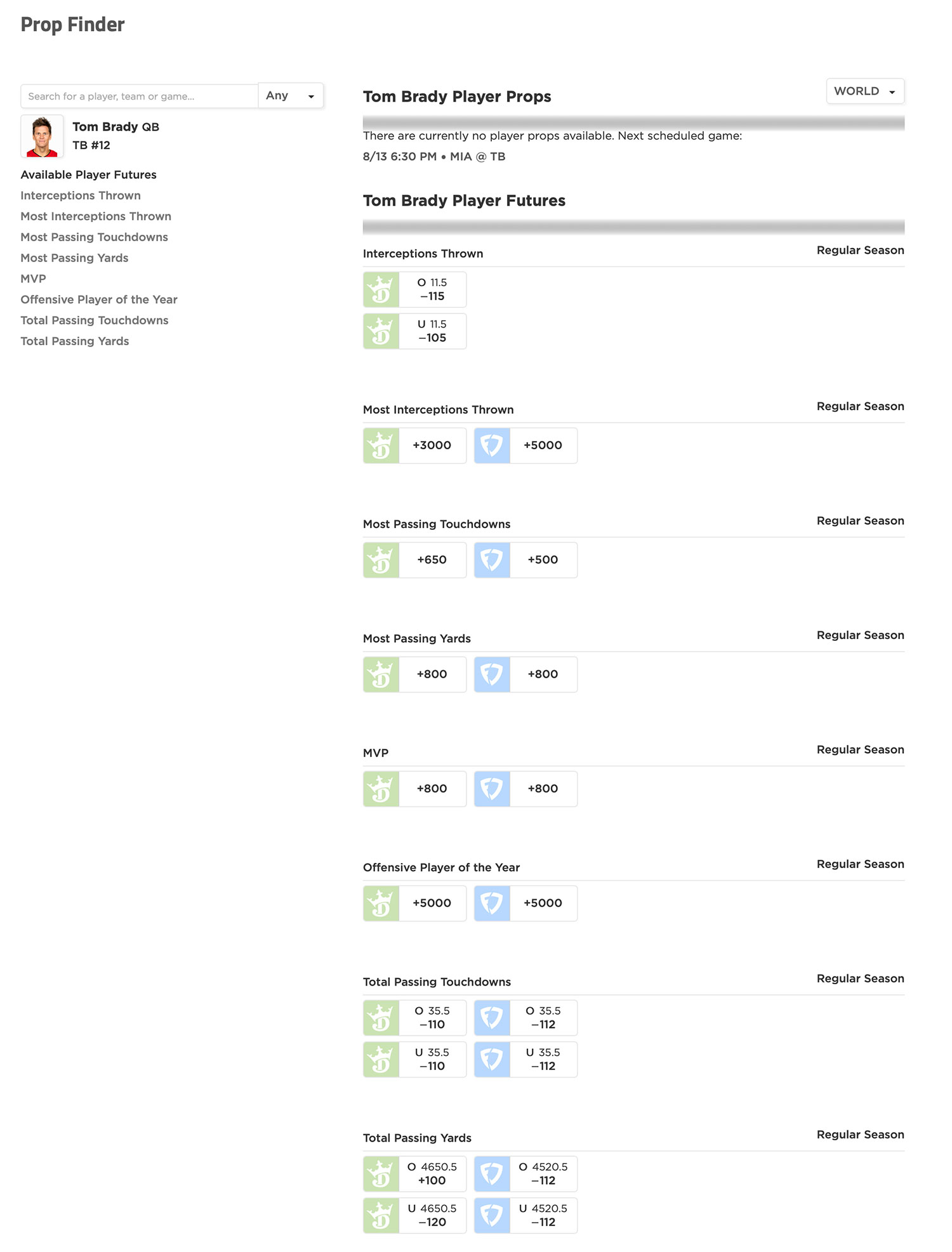
2018 Initial Strength of Schedule, Fast-Start and Fantasy Playoff Schedule Tool: RBs
 Longtime favorites of many in RosterWatch Nation is the Strength of Schedule and associated Fast-Start and Playoff Schedule tools. The tool is simple-to-use and designed to be an intuitive tie-breaking tool when faced with tough decisions in mock drafts while preparing for draft day. PRO MEMBERS: CLICK HERE TO GO TO YOUR DOWNLOADS SECTION TO DOWNLOAD THE RUNNING BACK TOOL.
Longtime favorites of many in RosterWatch Nation is the Strength of Schedule and associated Fast-Start and Playoff Schedule tools. The tool is simple-to-use and designed to be an intuitive tie-breaking tool when faced with tough decisions in mock drafts while preparing for draft day. PRO MEMBERS: CLICK HERE TO GO TO YOUR DOWNLOADS SECTION TO DOWNLOAD THE RUNNING BACK TOOL.
Please remember that all final draft decisions should come solely and only from the magical and mystical RosterWatch cheat sheet which will have all of this information and so much more baked in. However, it is always wise to know the kind of schedule your fantasy players will face and, at which points in the season you may expect upgraded or downgraded performance based on matchups. The tool is simple and intuitive to use, but if you have questions about how to use it, or how our proprietary matchup grades are formulated, please see below.
EXPLANATION OF THE TOOL
The matchup grades for each defensive unit the fantasy player will face are marked as always on the RosterWatch matchup tool. Cells on the NFL Schedule grid next to each opponent are color-coded in the same way as the world-famous and epic RosterWatch Matchup Tool:
RED: Awful Matchups
PINK: Bad Matchups
WHITE: Neutral Matchups
LIGHT BLUE: Good Matchups
BLUE: Excellent Matchups
The tool is a simple NFL Schedule grid with Weeks 1-16 visually represented via the type of matchup we are projecting it will be for the fantasy player. The three periods are all included in the visualization, but it is sorted by TOTAL DIFFICULTY-SEASON.
All outputs (on the far right of the grid) are color-coded with DARK GREEN being best and WHITE being worst. The color coding, in turn, indicates worse and worse relative schedules over the period in question as the color of the output lightens from the dark green. For example, if a team has a dark green schedule output on the season, but a white output for the playoffs, you’ll know in just glancing at it that the schedule on the season (overall) looks to be conducive to fantasy scoring, but the small window of Weeks 14, 15 and 16, when the fantasy playoffs are occurring, looks to project as a difficult patch. In summary:
1) TOTAL DIFFICULTY: the full season’s total sum of matchup grades. The higher the total sum of grades, the higher the difficulty of the schedule. The teams are sorted from easiest to worst projected schedule for the position in question.
2) FAST-START: the total sum of matchup grades for the first four games of the season (as we put a HIGH premium on getting off to a fast star). The higher the total sum of grades, the higher the difficulty of the schedule. The teams are sorted from easiest to worst projected schedule for the position in question.
3) PLAYOFFS: the total sum of matchup grades for Weeks 14-16 (the fantasy playoff period in over 95% of leagues). The higher the total sum of grades, the higher the difficulty of the schedule. The teams are sorted from easiest to worst projected schedule for the position in question.
WHAT GOES INTO RW MATCHUP RANKINGS?
RosterWatch Matchup ratings ARE NOT REGULAR-OLD “FANTASY POINTS AGAINST” metrics!!!
In fact, these rankings will vary greatly from what you see elsewhere from outlets using such a worthless predictive metric as last year’s final fantasy-points-allowed tallies. While 2017 fantasy-points-against does make up a notable portion of the overall mix of steps that make up our proprietary matchup algorithm in-season, what makes our unit matchup rankings so special is that the scores come predominantly from RW’s private matchup grades for every projected player who will be defending against the run, defending the receiver/tight end in coverage and rushing the passer. The preseason projections also take into account the latest Vegas win totals for each team in an effort to encapsulate some semblance of game-script projection. All of these private grades give us our initial baseline scores which go into our overall defensive unit rankings, but they also allow us to dissect the defense into groupings suited toward each fantasy position specifically.
PLEASE NOTE: These unit rankings are not necessarily the same as they will be on the Week 1 Matchup Tool as the Epic Matchup Tool utilizes a weekly feed of data that accounts for injuries specific to the game in question as well as Vegas indicators which can’t be reasonably predicted and/or accessed at this early point in the preseason. It does, however, give our early projections of how we expect the defensive unit in question to operate over the long haul of the season all things being equal.
***This tool is a decision-making, tie-breaker tool and is NEVER to be used as a substitute for the RosterWatch Cheat Sheet.
One Comments
Leave a Reply
You must be logged in to post a comment.








Hey guys,
Im a new Pro member this year. I love what you guys are doing. And, while I haven’t used it yet in a real draft, the cheat sheet seems awesome. I appreciate the super flex sheet too. I am in a super flex, half point per league and its hard to find good info for draft prep in that set up. Every year that draft is a complete shit show and very unpredictable.
Anyway, my question is, I see the sheet for 2qb and ppr. Do you guys have one for standard leagues (non ppr)? Thanks